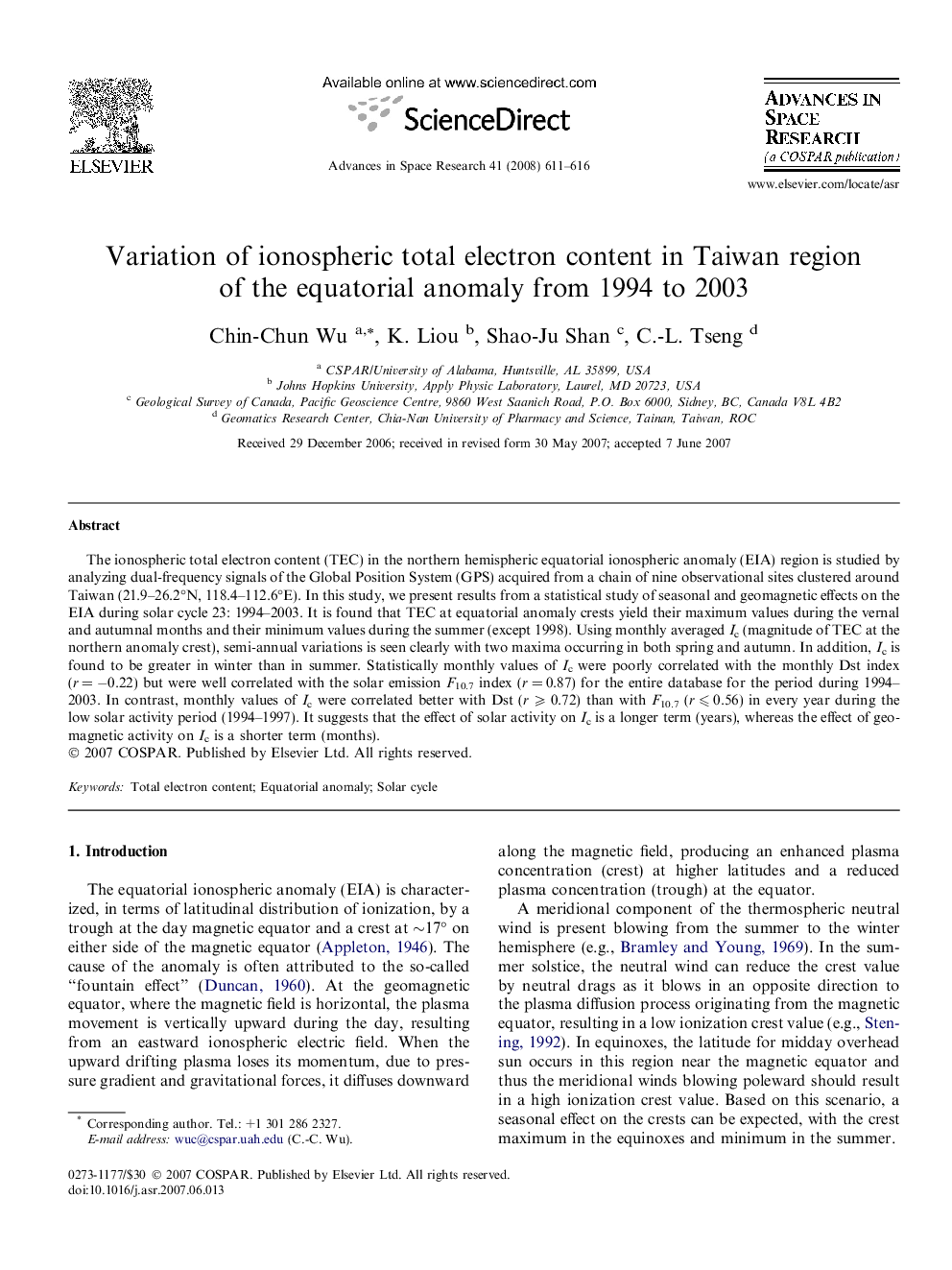| Article ID | Journal | Published Year | Pages | File Type |
|---|---|---|---|---|
| 1768761 | Advances in Space Research | 2008 | 6 Pages |
Abstract
The ionospheric total electron content (TEC) in the northern hemispheric equatorial ionospheric anomaly (EIA) region is studied by analyzing dual-frequency signals of the Global Position System (GPS) acquired from a chain of nine observational sites clustered around Taiwan (21.9-26.2°N, 118.4-112.6°E). In this study, we present results from a statistical study of seasonal and geomagnetic effects on the EIA during solar cycle 23: 1994-2003. It is found that TEC at equatorial anomaly crests yield their maximum values during the vernal and autumnal months and their minimum values during the summer (except 1998). Using monthly averaged Ic (magnitude of TEC at the northern anomaly crest), semi-annual variations is seen clearly with two maxima occurring in both spring and autumn. In addition, Ic is found to be greater in winter than in summer. Statistically monthly values of Ic were poorly correlated with the monthly Dst index (r = â0.22) but were well correlated with the solar emission F10.7 index (r = 0.87) for the entire database for the period during 1994-2003. In contrast, monthly values of Ic were correlated better with Dst (r ⩾ 0.72) than with F10.7 (r ⩽ 0.56) in every year during the low solar activity period (1994-1997). It suggests that the effect of solar activity on Ic is a longer term (years), whereas the effect of geomagnetic activity on Ic is a shorter term (months).
Related Topics
Physical Sciences and Engineering
Earth and Planetary Sciences
Space and Planetary Science
Authors
Chin-Chun Wu, K. Liou, Shao-Ju Shan, C.-L. Tseng,
